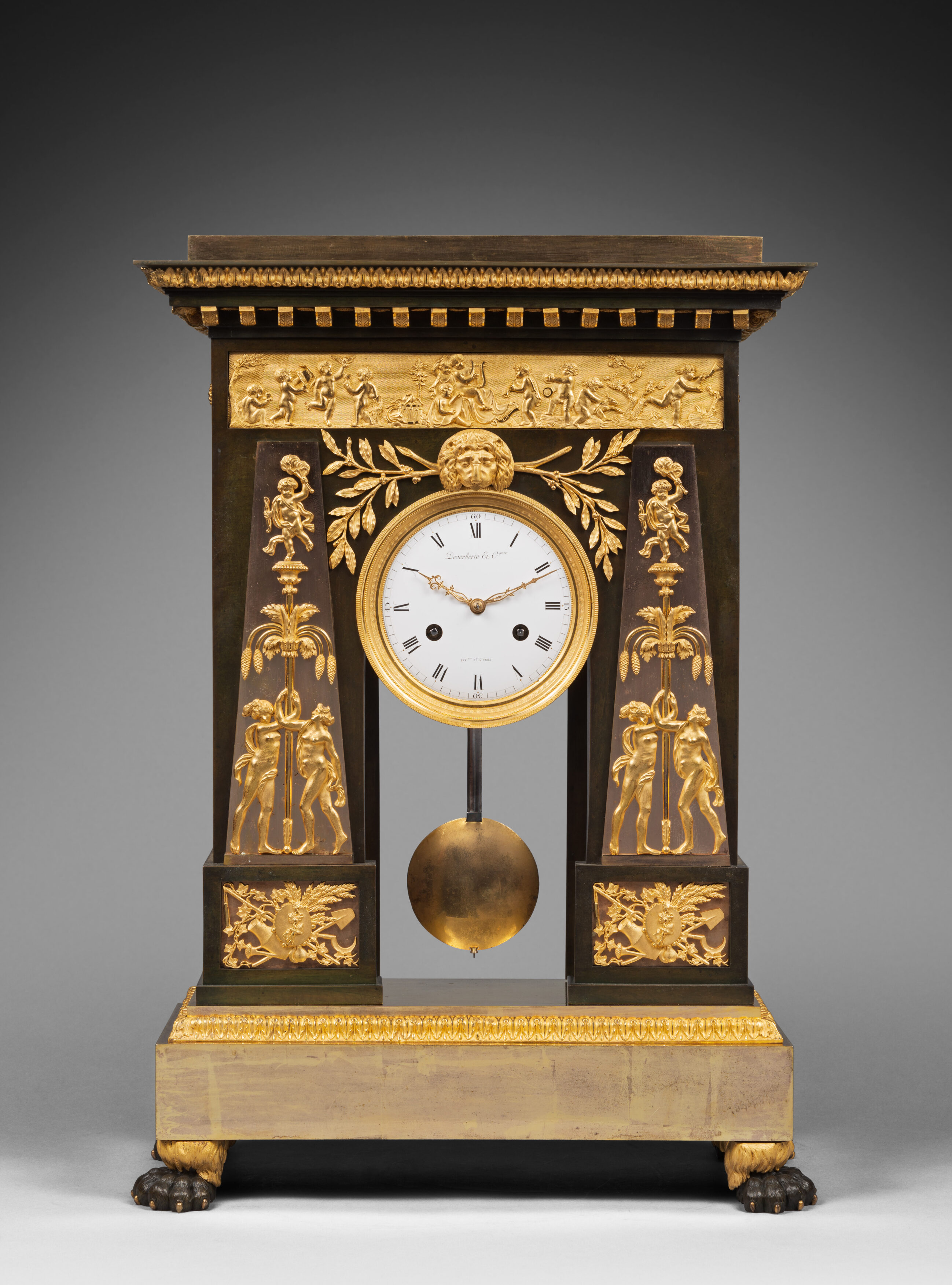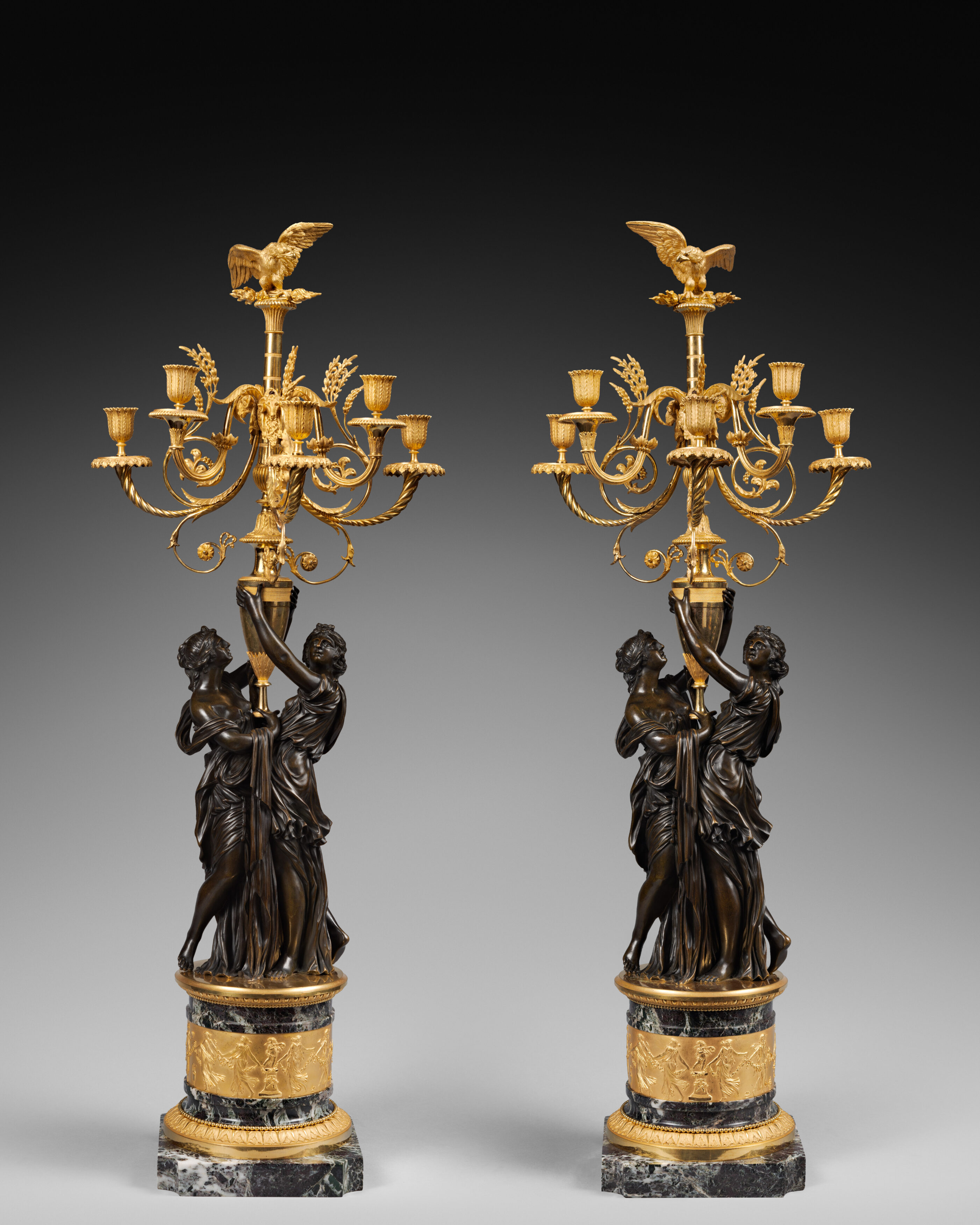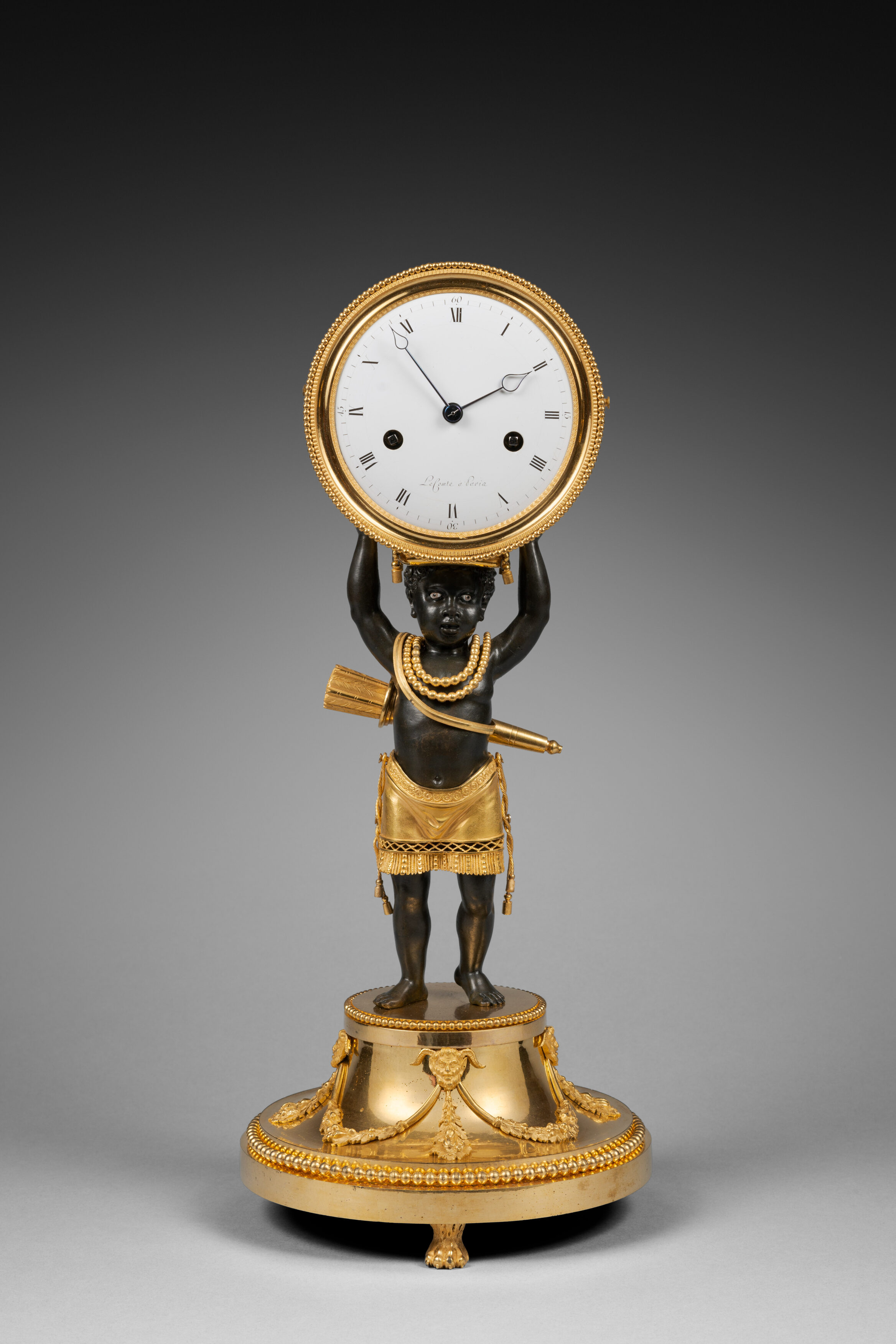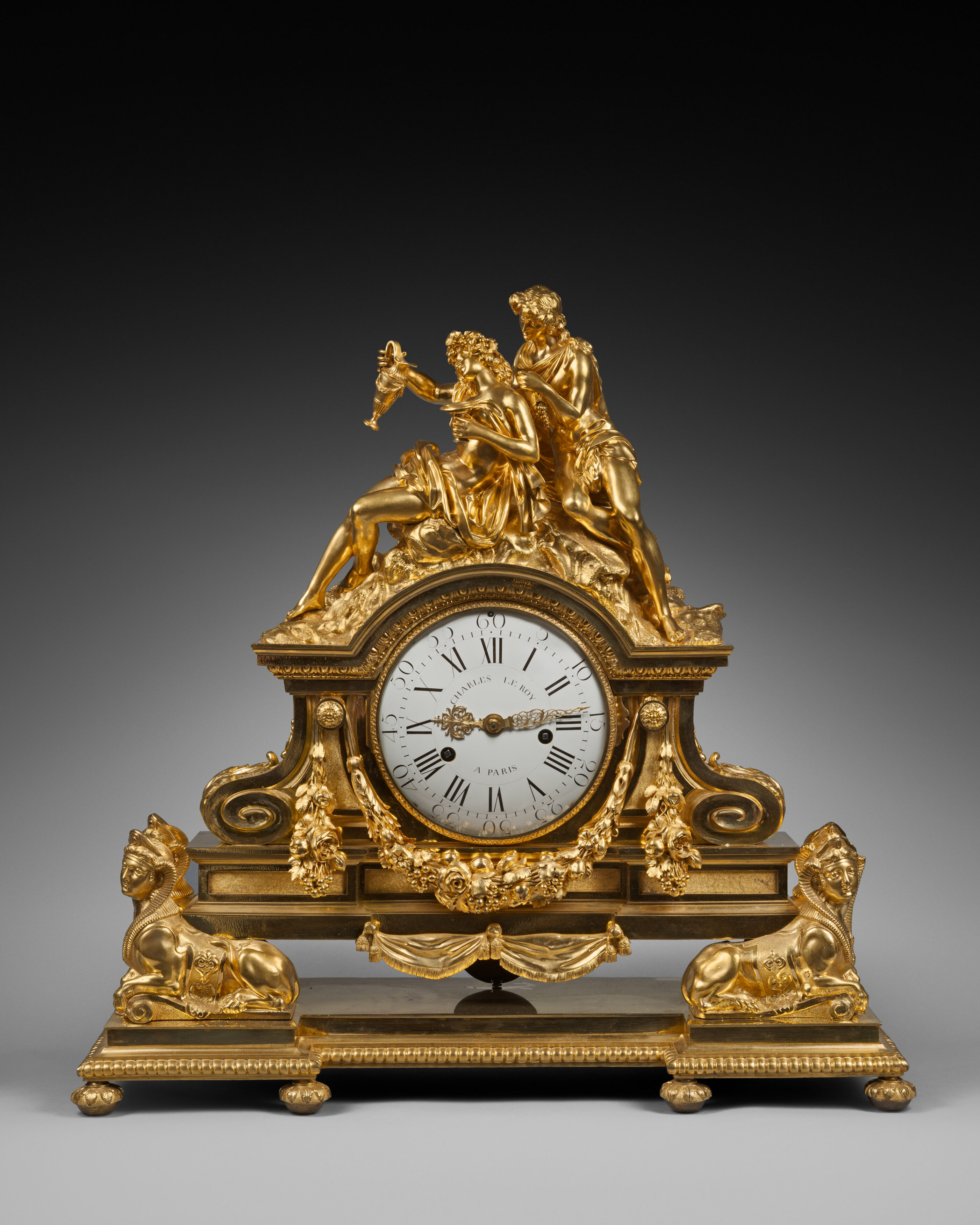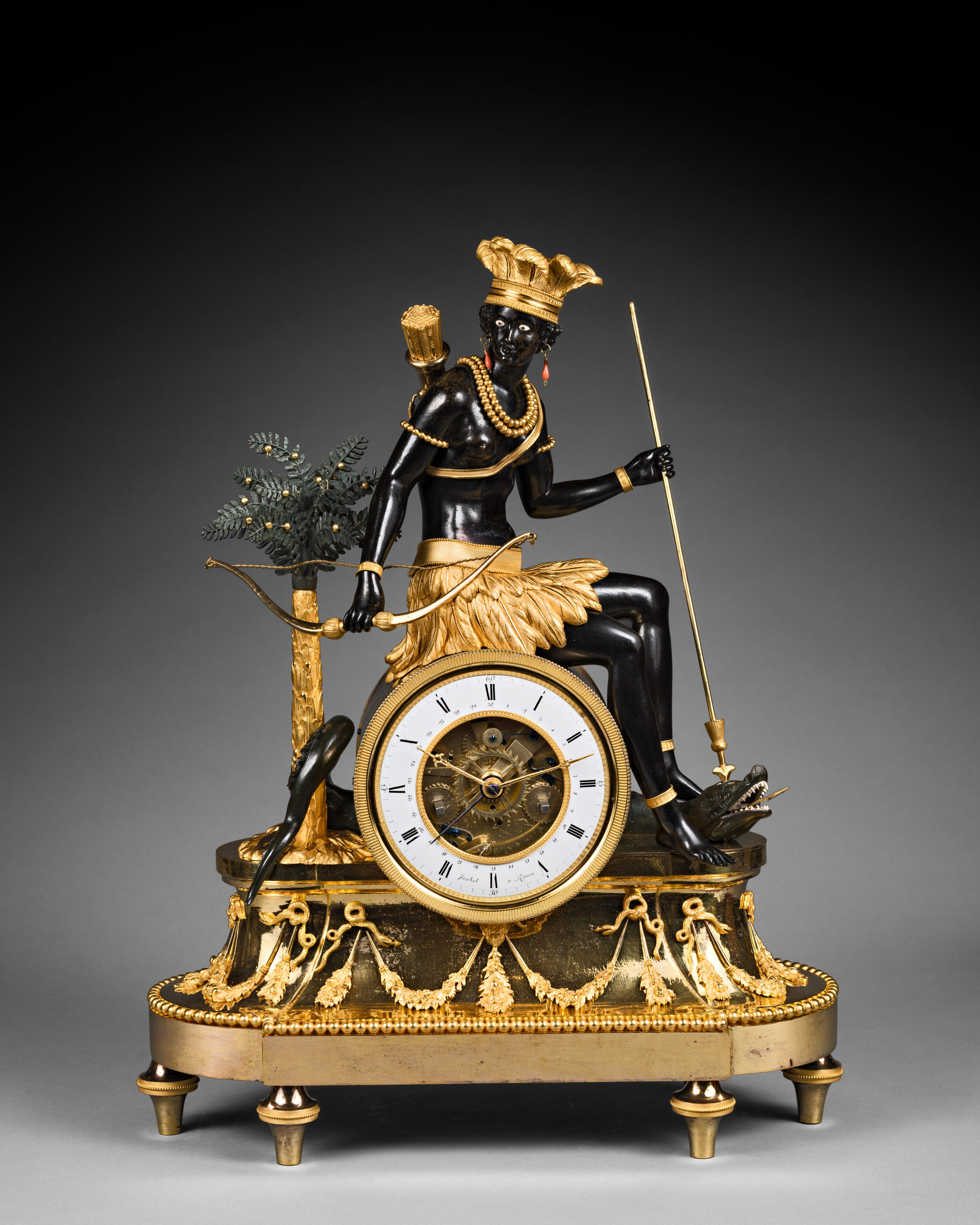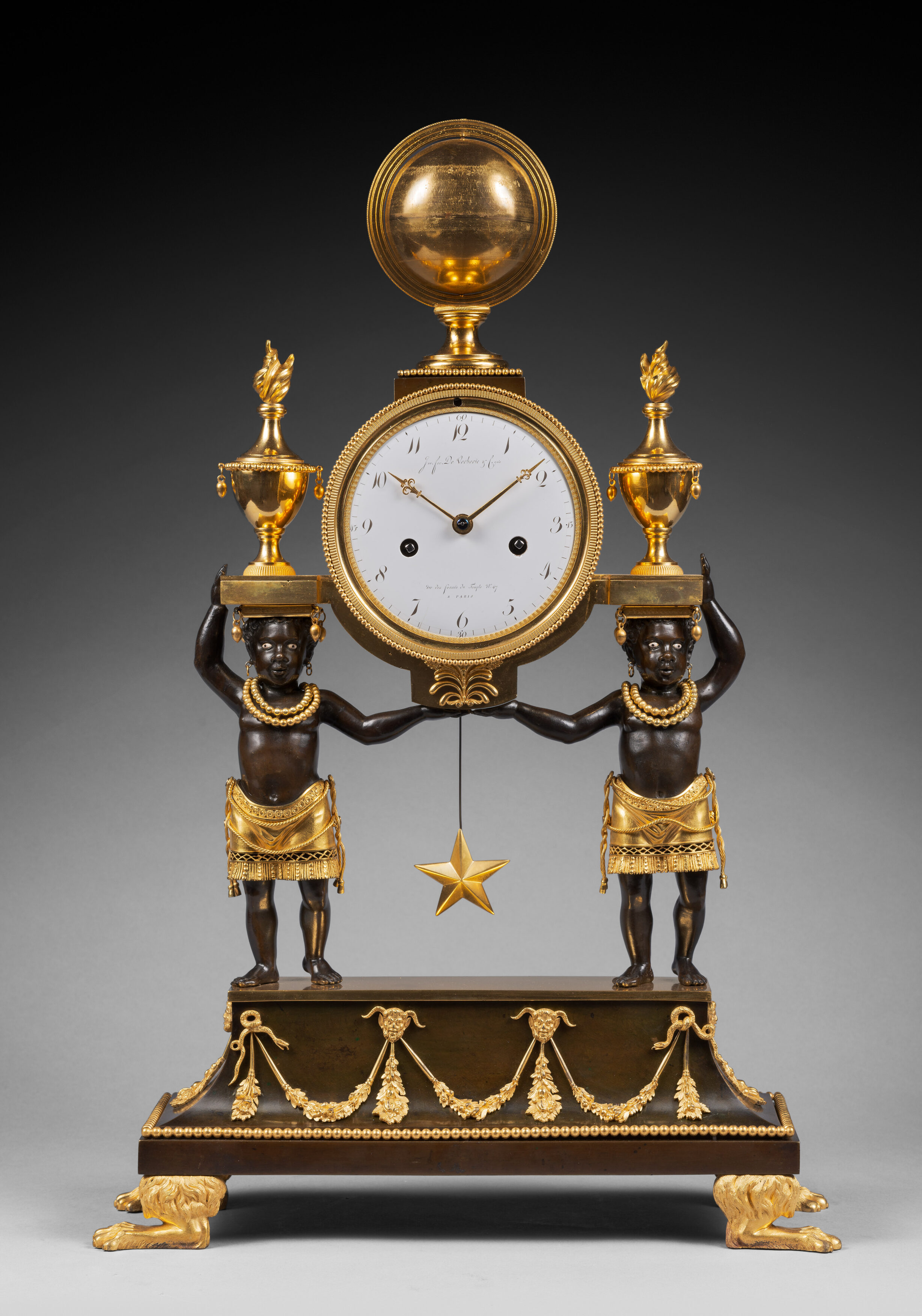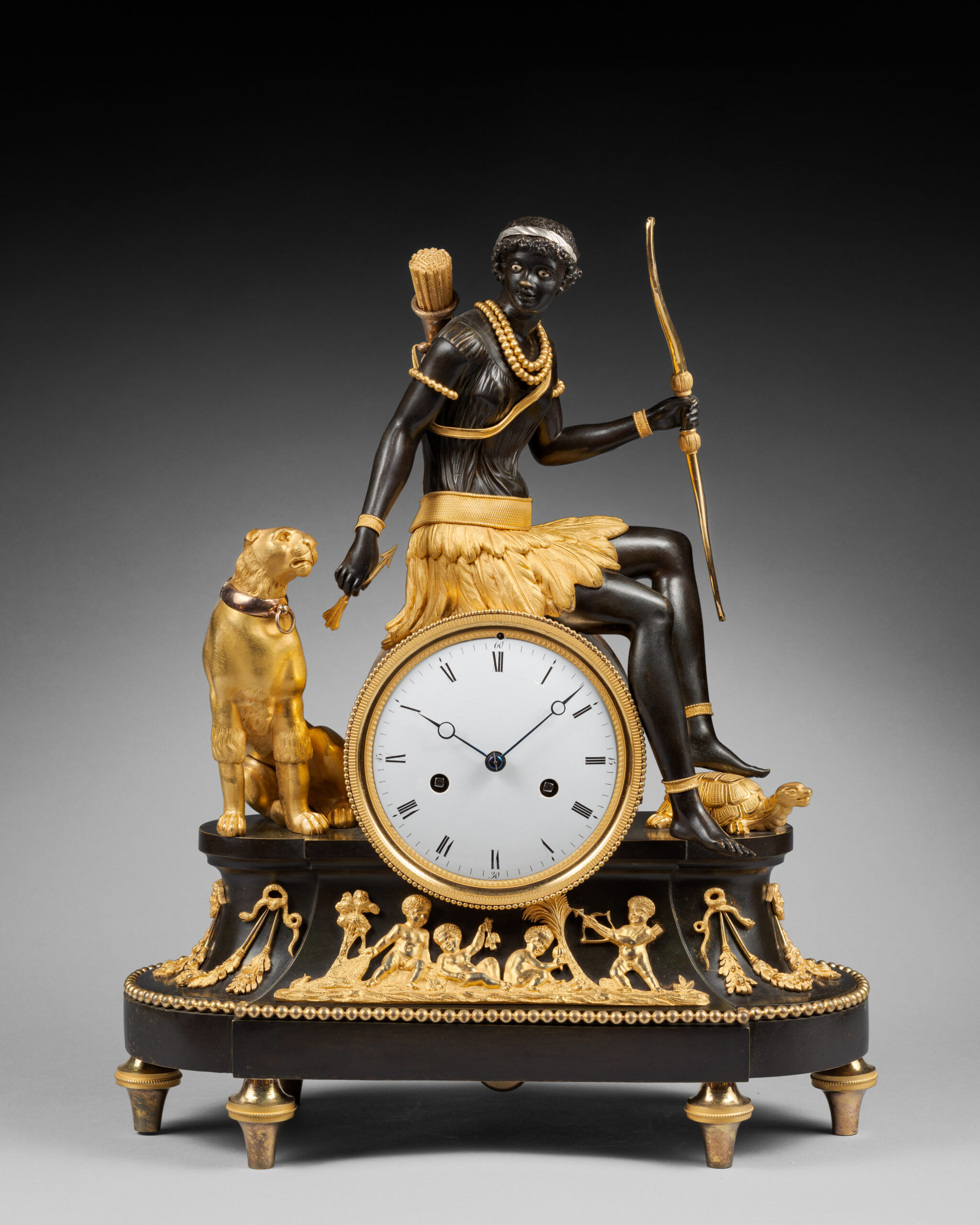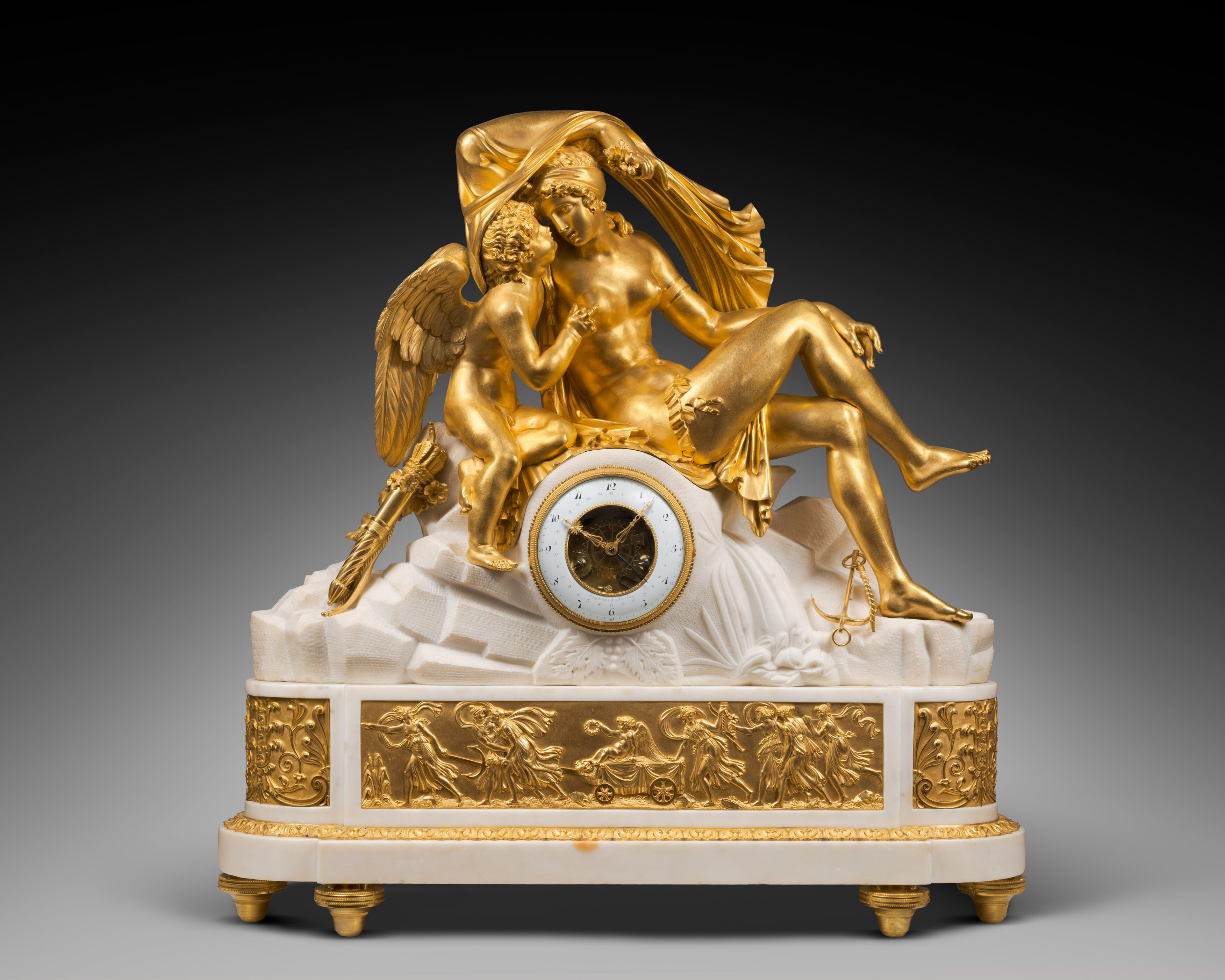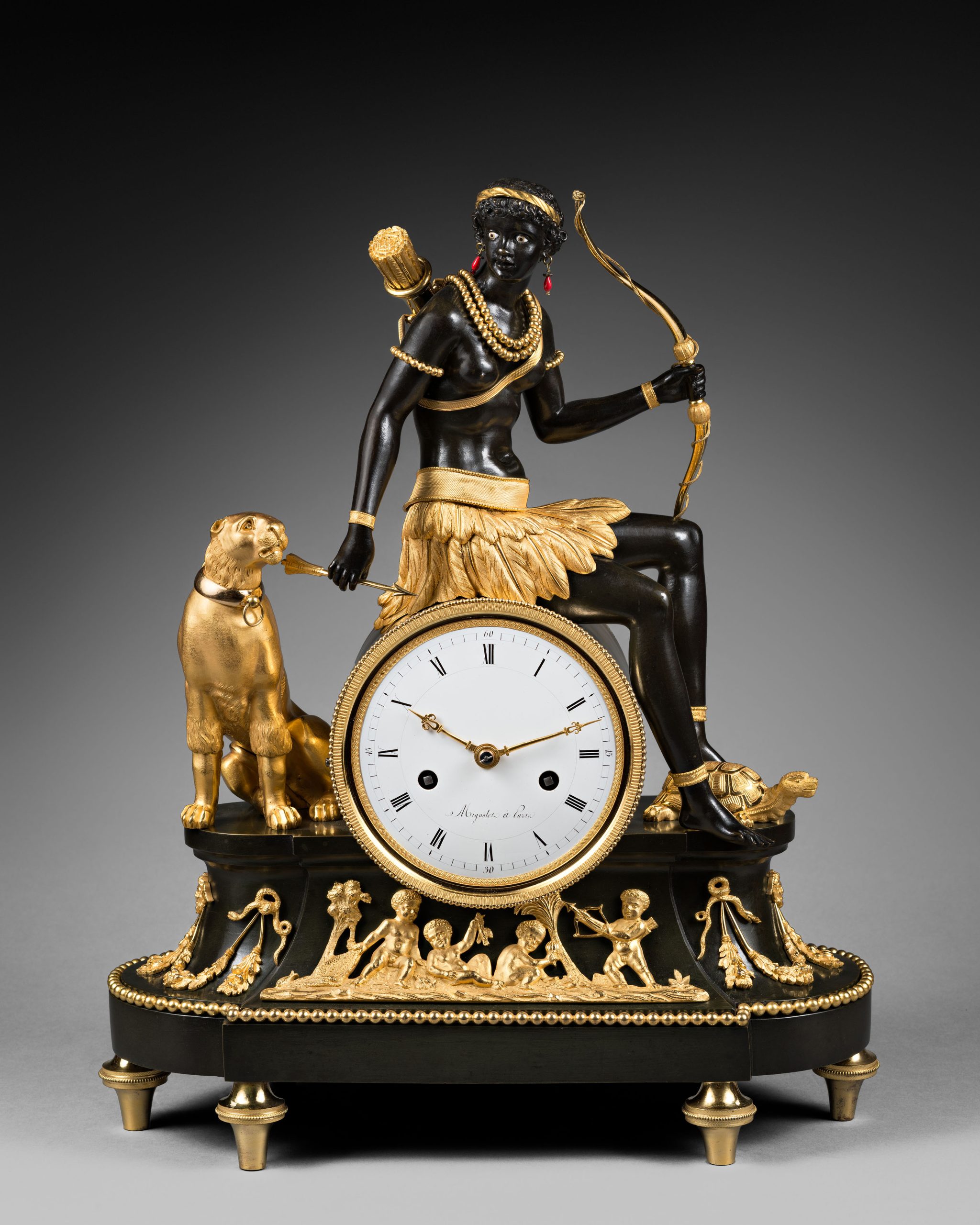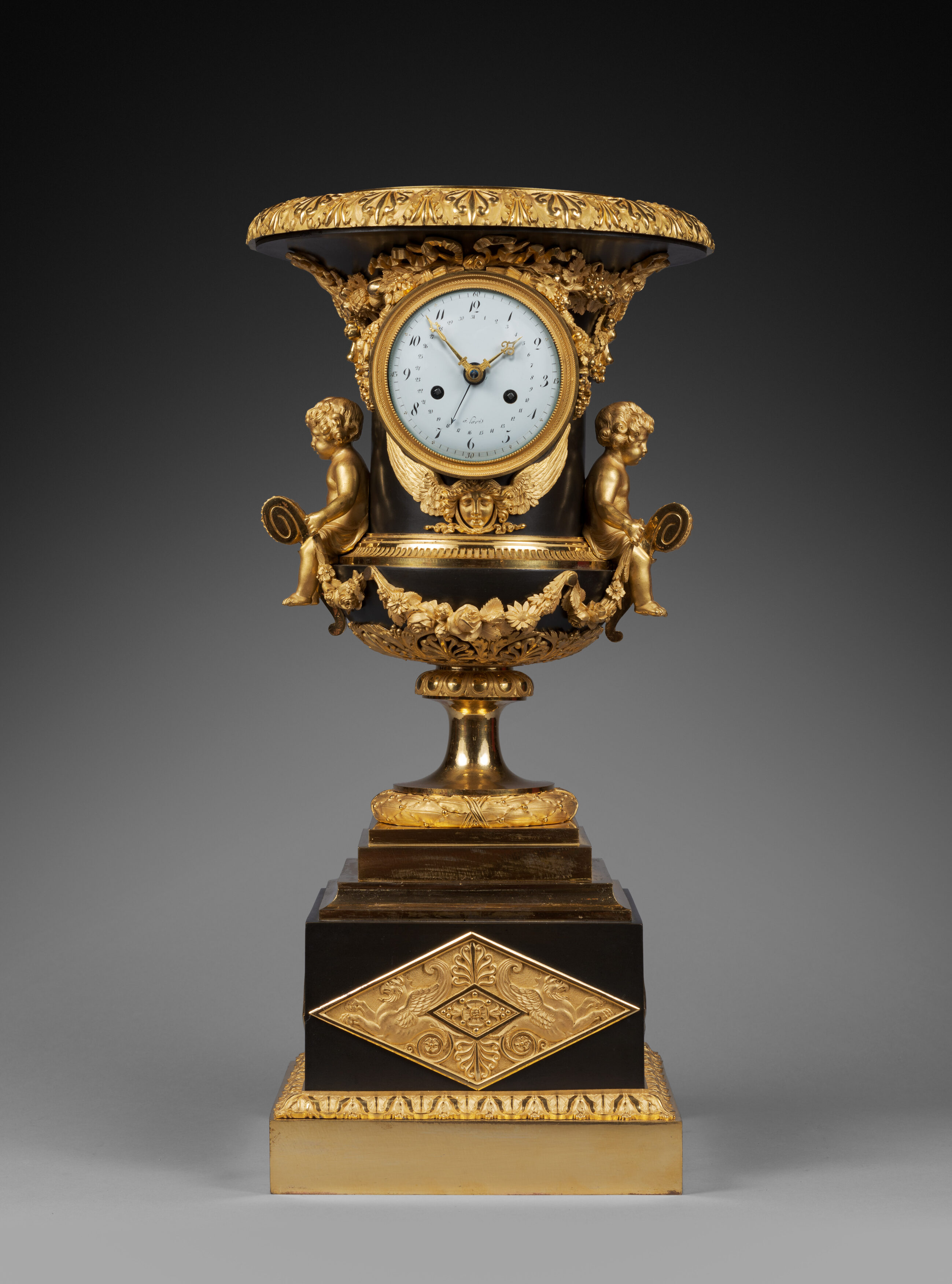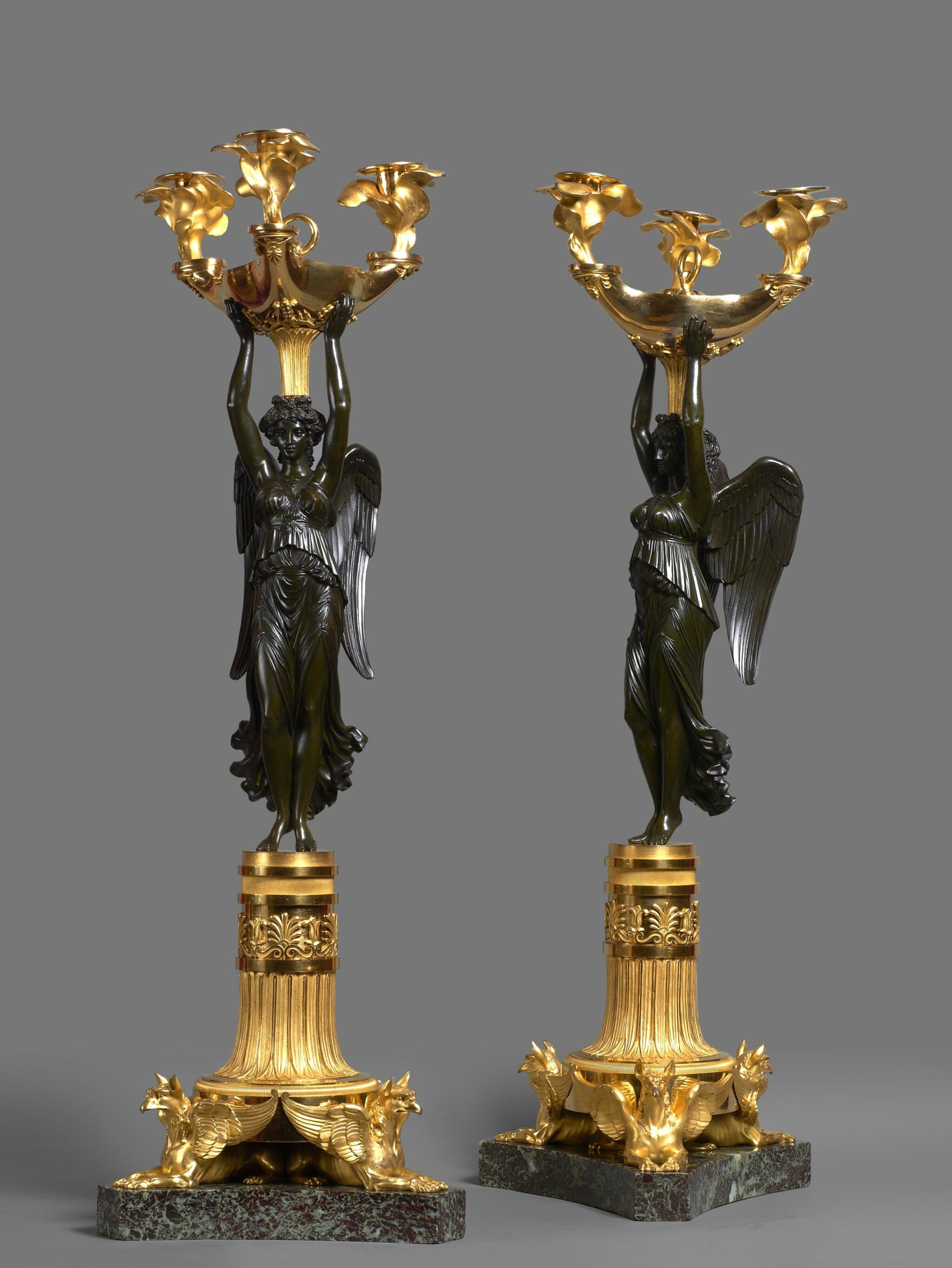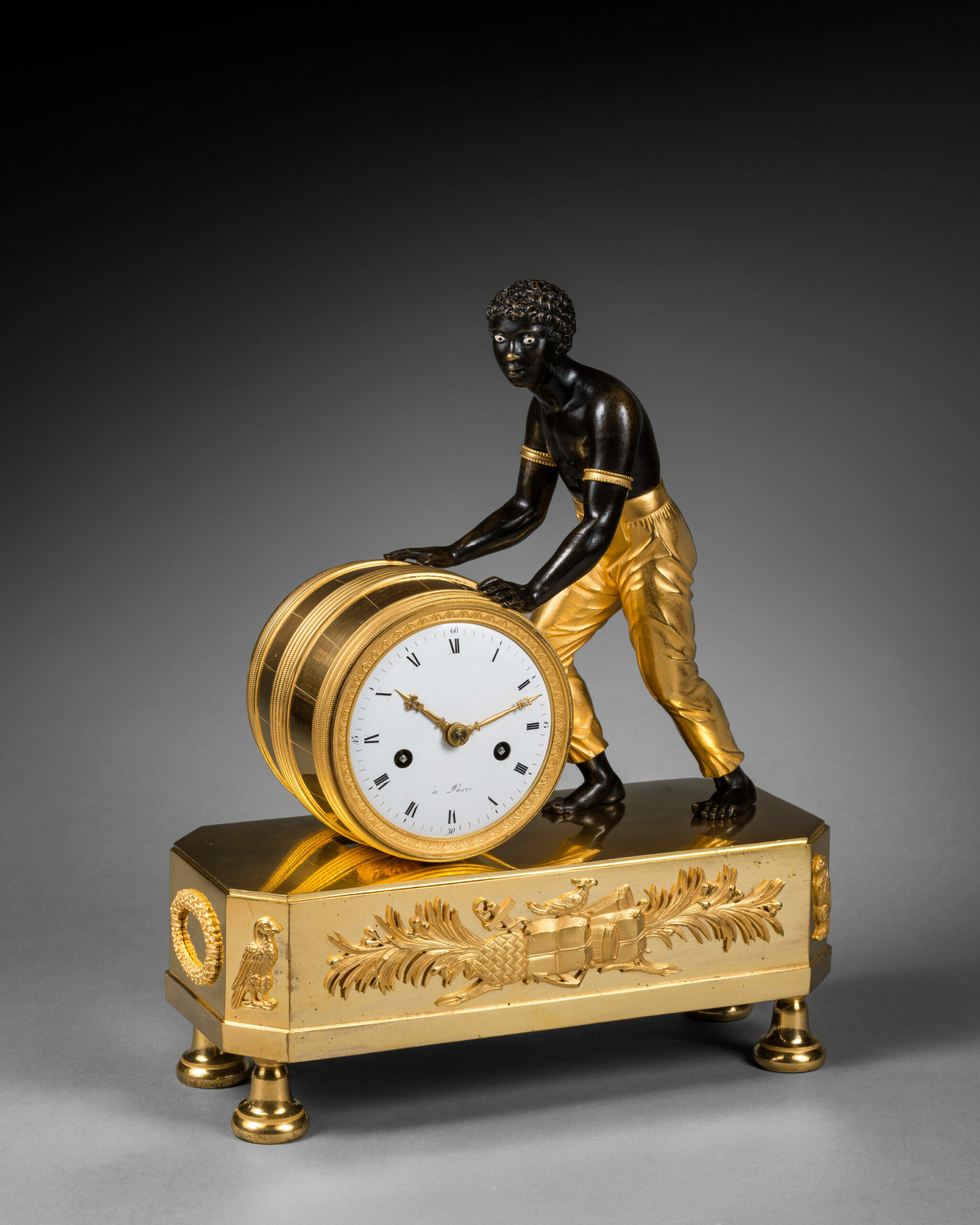Rare Patinated and Matte Gilt Bronze Mantel Clock in the form of a Portico
The Consulate period, spanning from 1799 to 1804, marked a crucial juncture in French history, bridging the revolutionary fervor with the opulence of the Napoleonic era. In the realm of decorative arts and clocks, this transitional phase continued to echo the neoclassical influences of the Directory period while foreshadowing the grandeur of the Empire style that would follow.
Some trends that began in the Directory period continue to be in fashion during this time, such as the Noble Savage theme, with its appeal to exotism and exploration.
Furniture design during the Consulate era retained the neoclassical simplicity seen in the Directory period, featuring clean lines and geometric forms. However, there was a gradual re-emergence of more luxurious materials and embellishments, hinting at the impending return of a more extravagant aesthetic.
Clockmaking also experienced a nuanced evolution during the Consulate period. The creations during this time display the influence of both the 18th and 19th centuries style. Clock cases retained the neoclassical elements of their predecessors but began to incorporate more intricate detailing and gilded ornamentation. The works of renowned cabinetmaker Ferdinand Schwerdfeger and bronze makers, such as Pierre-Philippe Thomire and Jean-Simon Deverberie, were some that exemplified this delicate balance between neoclassical restraint and a burgeoning return to opulence.
Likewise, this inclination carried towards the lighting decoration, creating a link between the 18th century and 19th century candelabras.
The Consulate period, with its transitional nature, serves as a fascinating chapter in the evolution of French decorative arts, providing a glimpse into the stylistic shifts that paved the way for the more lavish and imposing Empire style under Napoleon Bonaparte’s rule.
